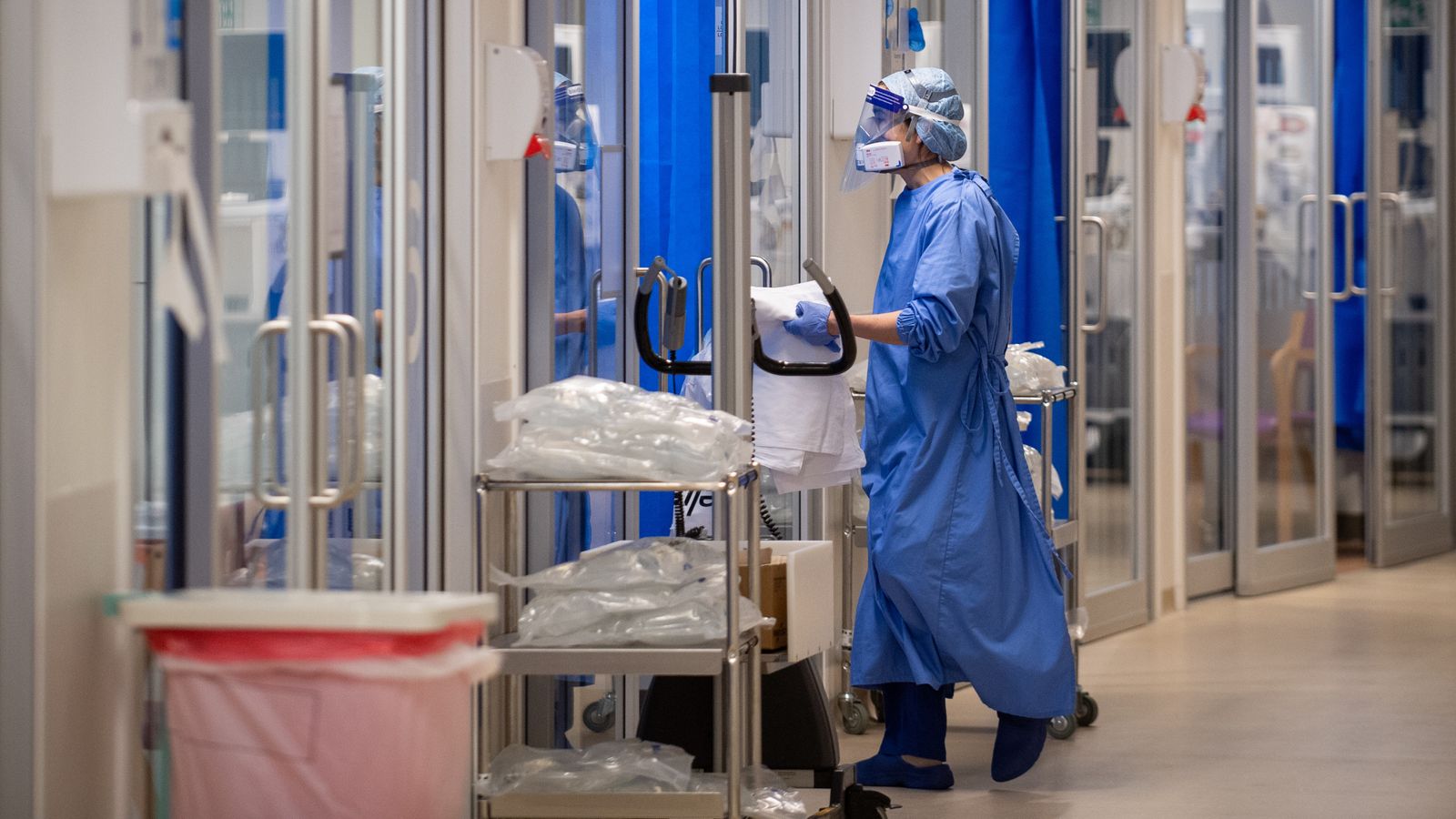Sixty percent of people being admitted to hospital with COVID-19 are unvaccinated, the government’s chief scientific adviser has said.
Earlier, Sir Patrick Vallance told a news briefing that figure was for double-jabbed people. But he later corrected himself on Twitter, saying the original statistic was false.
He posted: “Correcting a statistic I gave at the press conference today, 19 July.
“About 60% of hospitalisations from COVID are not from double-vaccinated people, rather 60% of hospitalisations from COVID are currently from unvaccinated people.”
Speaking at the briefing alongside Boris Johnson – who appeared remotely from Chequers where he is self-isolating – Sir Patrick said hospitalisations could rise to over 1,000 a day.
Live COVID updates from the UK and around the world
He added: “But the rates should be lower than they have been previously because of the protective effects of vaccination.”
He said this was not surprising “because the vaccines are not 100% effective”.
Correcting a statistic I gave at the press conference today, 19 July. About 60% of hospitalisations from covid are not from double vaccinated people, rather 60% of hospitalisations from covid are currently from unvaccinated people.
“They’re very, very effective, but not 100%, and as a higher proportion of the population is double-vaccinated, it’s inevitable that those 10% of that very large number remain at risk, and therefore will be amongst the people who both catch the infection and end up in hospital.”
Meanwhile, most regions of England now have more coronavirus patients in hospital than at any point since mid-March.
Two regions – south-west England and the combined area of north-east England and Yorkshire – are back to levels last seen more than four months ago.
For England as a whole, there are now 3,813 patients in hospital with COVID-19 – the highest number since 24 March.
Sir Patrick also warned said there were “high levels of COVID and they are increasing”.
He said the UK was quite close to the previous “winter wave” of infections.
“In the winter wave, we were up to around 60,000 people testing positive per day,” he said.
“We are now somewhere on towards 50,000. So we’re quite close to the size of the winter wave of infections and this is going to increase.”
He said the timing of the next peak of the virus would be “uncertain”.
He said: “But most of the models are suggesting that there should be a peak and start seeing some sort of either plateau or decrease over August.
“And at that point, if things continue to increase at the rate they are – and as I said at the outset, there is something like 50,000 or near 50,000 cases per day, or positives per day, at the moment being detected – with a doubling time of 11 days, you can see that that gets to pretty high numbers very quickly.
“And another doubling time will take you to even higher numbers, of course – that would be really quite, quite worrying. So we would like to see some flattening of this, some decrease in the trajectory, and ideally, as you rightly say, you’d like to see this coming down by September, as return of schools would add another pressure on top of that.”
England’s deputy chief medical officer Professor Jonathan Van-Tam added the uncertainty would be “driven by human behaviour over the next four to six weeks”.
Subscribe to the Daily podcast on Apple Podcasts, Google Podcasts, Spotify, Spreaker
He said: “So really, it is kind of in everybody’s hands, yours and mine.
“If we are gradual and cautious, and we don’t tear the pants out of this just because we’re glad to have our full freedoms back, then we will materially affect the size and shape of the remainder of this epidemic curve and where the peak occurs, and how big it is.
“It is literally in the hands of the public, in terms of the behaviours.”






















